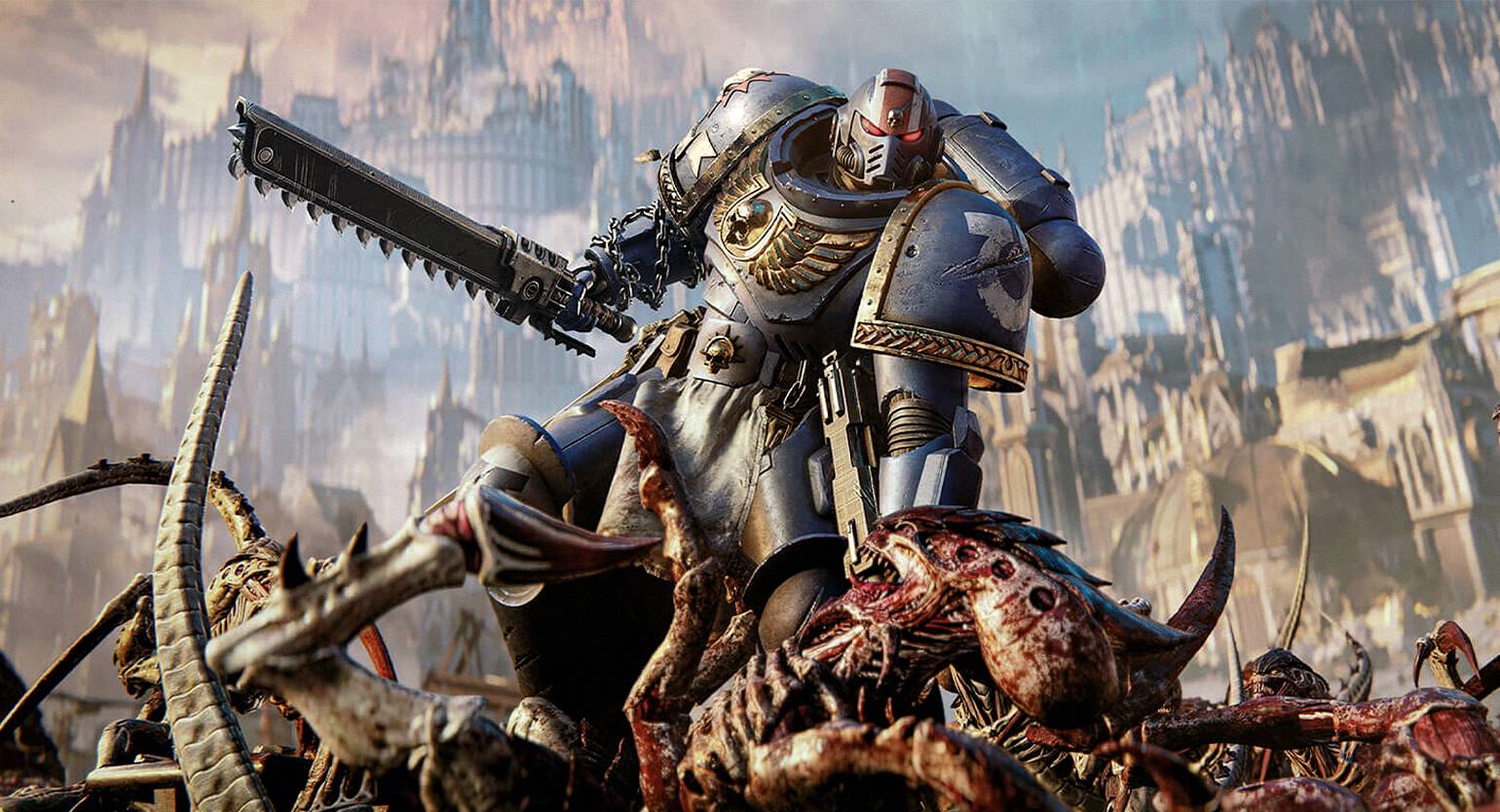Warhammer 40,000: Space Marine 2 — LQA Case Study
Warhammer 40,000: Space Marine 2 — LQA Case Study
The Warhammer game series is a vast franchise that spans tabletop games, video games, books, and comics, all set in the legendary universes of Warhammer Fantasy and Warhammer 40,000. Created by the British company Games Workshop, these worlds have become iconic in the realms of fantasy and sci-fi.
Here’s how the INLINGO team took on the challenge of localization testing for Warhammer 40,000: Space Marine 2 — a spectacular action-packed sequel to the 2011 game. Discover how many bugs we uncovered and how we structured our workflow to ensure success!
About Warhammer 40,000: Space Marine 2
Warhammer 40,000: Space Marine 2 is an intense third-person action game that launched on September 9, 2024, for PC, PlayStation 5, and Xbox Series X/S. Published by Focus Entertainment, this highly anticipated sequel delivers brutal, fast-paced combat in the grimdark universe of Warhammer 40K.
Story
Players once again step into the power armor of Lieutenant Titus, a legendary Ultramarine. Following the events of the first game, Titus faces a terrifying new enemy — the Tyranids, a relentless swarm of insect-like creatures bent on consuming all life. The battle rages across the war-torn planets of Avarax and Kadaku, where Titus and his battle-brothers fight to defend the Imperium of Man from annihilation.
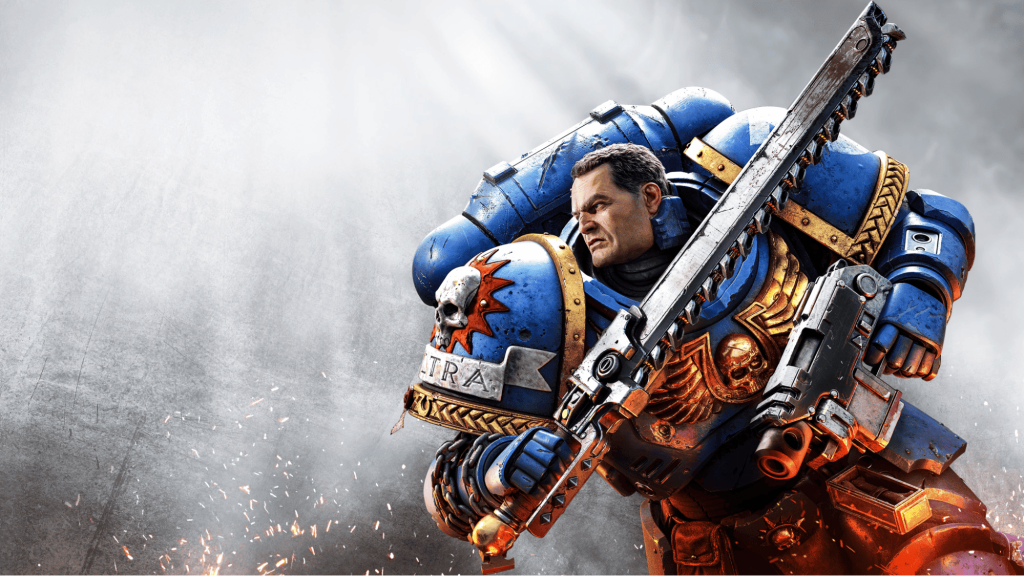
Warhammer 40,000: Space Marine 2. Source
Gameplay
Warhammer 40,000: Space Marine 2 delivers an electrifying mix of ranged and melee combat. As Titus, you’ll wield powerful bolters to mow down hordes of smaller foes and unleash devastating melee attacks with swords and other brutal weapons to take on more formidable enemies. The melee combat system features parrying, counterattacks, and evasive maneuvers, adding depth to the battlefield chaos. Titus’ armor can sustain damage in battle, and you restore it by executing enemies in brutal fashion. Health, on the other hand, is only replenished through Medicae Stimms, ensuring that every fight is a relentless test of skill and survival.
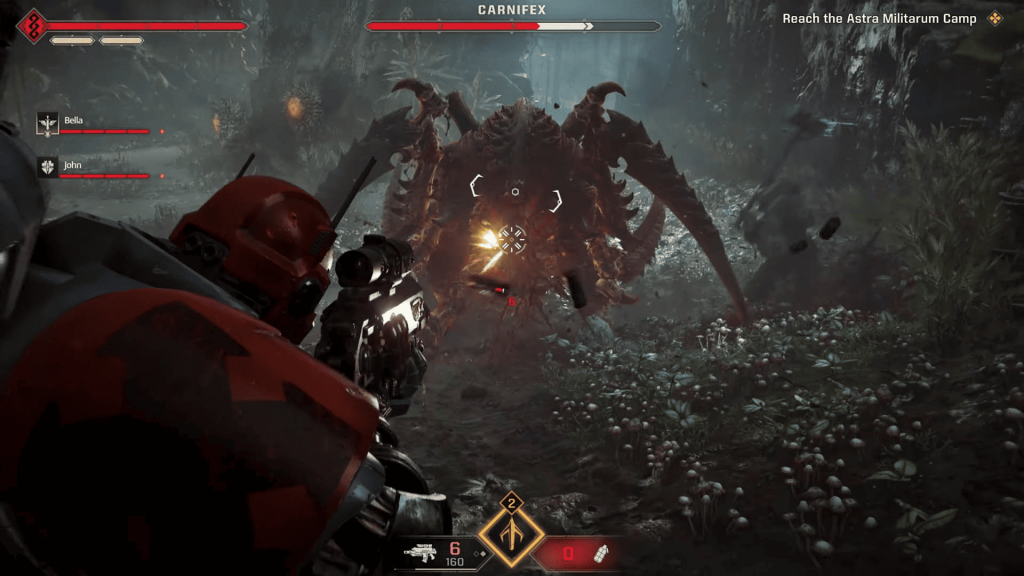
Warhammer 40,000: Space Marine 2. Source
The game supports cooperative gameplay for up to three players, allowing friends to tackle the campaign together. In solo mode, AI-controlled allies assist Titus in battle.
Following its release, Warhammer 40,000: Space Marine 2 received praise for its high-octane action and faithful adaptation of the 40K universe. The developers have committed to supporting the game with fresh content through the end of 2025, adding new missions, weapons, and game modes.
How INLINGO Conducted Localization Testing for the Game
Originally developed in English, Warhammer 40,000: Space Marine 2 underwent full localization into multiple languages, including French, German, Spanish, Japanese, Chinese, Russian, and more.
In April 2024, the publisher reached out to INLINGO to conduct Localization Quality Assurance (LQA) for this highly anticipated sequel. INLINGO carried out 120 hours of testing across five fully dubbed languages:
Additionally, we conducted 80 hours of testing across 10 languages that featured subtitled localization without voice dubbing:
Localization testing is a crucial process that ensures software aligns with the linguistic, cultural, and regional nuances of its target market. This includes verifying translations, date formats, currencies, addresses, and the proper display of text and graphics in the localized version. And that’s exactly what we set out to do for this game.
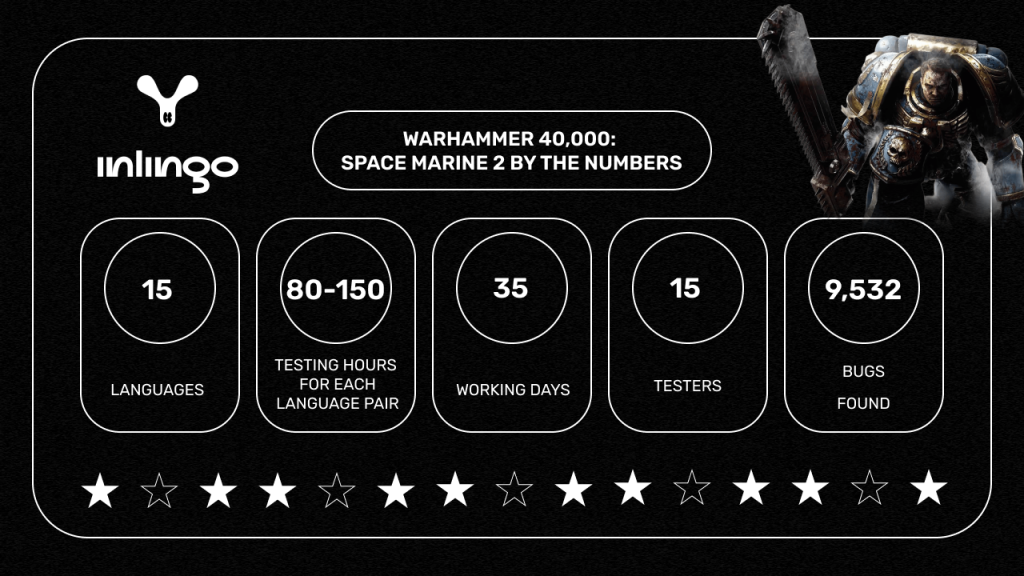
Preparation is the Key to Success
Warhammer 40,000: Space Marine 2 is a true AAA experience — a high-budget project crafted by a major studio with significant resources. These games stand out for their top-tier graphics, deeply refined gameplay, aggressive marketing, and an immense amount of content.
Before launch, the game had to undergo rigorous testing: identifying bugs, refining details, and submitting it to the localization vendor for validation. And that wasn’t all — after implementing fixes, the client returned for a second round of testing — regression testing — to ensure that all previously detected bugs were resolved across all languages.

Kristina Lobkova,
Project Manager:
“This project was a real challenge for our team. We had to fine-tune our workflow so that 15 testers could work seamlessly as a single unit for an entire month and deliver high-quality results. The game features a three-player story campaign and an intense 6v6 PvP mode. To properly test these aspects, we created a dedicated chat where testers coordinated their co-op campaign runs, joined multiplayer matches, and even exchanged gameplay tips and tricks. One week before the project officially began, we gathered detailed instructions, reference materials, and checklists to help testers refresh their knowledge of the Warhammer 40,000 universe.”
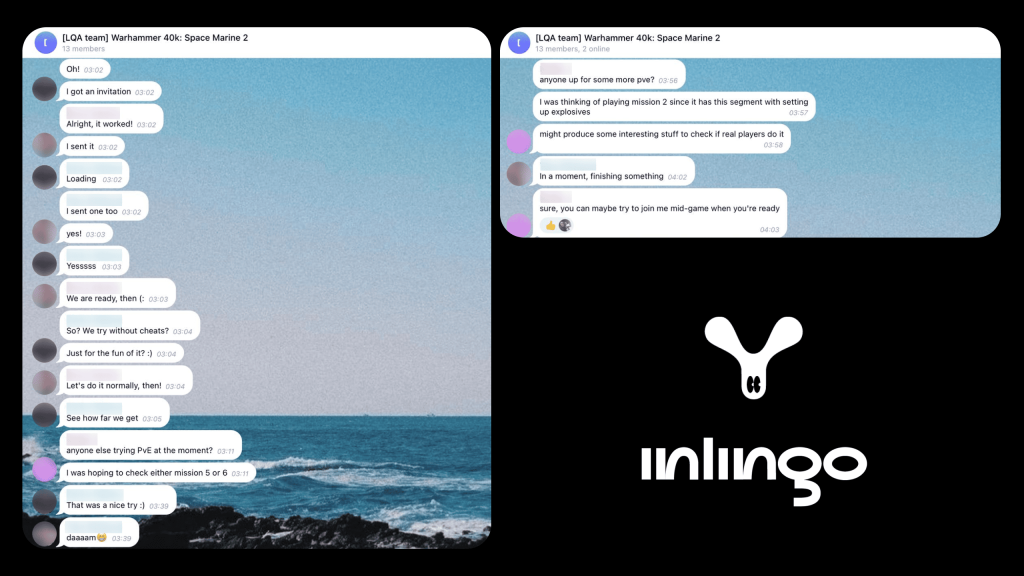
Team chat on Telegram
How We Assembled the Team
For Warhammer 40,000: Space Marine 2, we put together a top-tier team with extensive relevant experience. The selection process for testers took about two weeks — slightly longer than usual, but for good reason.
A strong collaboration between our Vendor Manager and LQA Manager played a key role in achieving great results. The Vendor Manager handled initial screening, surveying dozens of testers about their familiarity with Warhammer, their hardware specs, and their availability for the project. Meanwhile, the LQA Manager focused on the technical side — PC requirements and hands-on testing experience.
We had three key criteria when selecting testers:
A PC that met the necessary technical requirements, including:

Kristina Lobkova, Project Manager:
“A crucial factor in assembling a team for any project is relevant experience. We can’t put someone who has only tested mobile games on a AAA shooter and expect flawless results. That’s why our team consisted of professionals who had already worked on large-scale, high-budget projects.”
How We Organized the Workflow
The scale of testing was massive, which added complexity to the technical processes. For a full month, testers played the game daily and reported bugs. To streamline the workflow and ensure top-notch quality, we implemented parallel bug verification by a manager alongside the testers — something that doesn’t always happen.
For smaller testing tasks, a manager typically only starts reviewing bug reports and the lockit after testers have finished their work. This time, however, both processes ran almost simultaneously. This approach was essential to keeping the bug reports and lockit constantly up to date, catching technical issues in real time, and compiling them into a comprehensive report for the developers.

Kristina Lobkova, Project Manager:
“We were incredibly lucky — the client entrusted us with the project for an entire month, giving us the freedom to deliver a fully polished final result. This eliminated multiple rounds of bug submissions.
Thanks to this, we were able to implement parallel management checks. We introduced more control points, ensuring that by the end of testing, we wouldn’t be overwhelmed by the sheer number of bugs across 15 languages that needed reviewing.”
In the final stage, the project manager compiled a comprehensive bug report for the developers. Using this as a reference, we manually identified and corrected linguistic issues in the lockit.
What Errors Did We Find?
Work on the project spanned just over a month. In that time, we tested the localization across 15 languages and uncovered a total of 9,500 bugs.
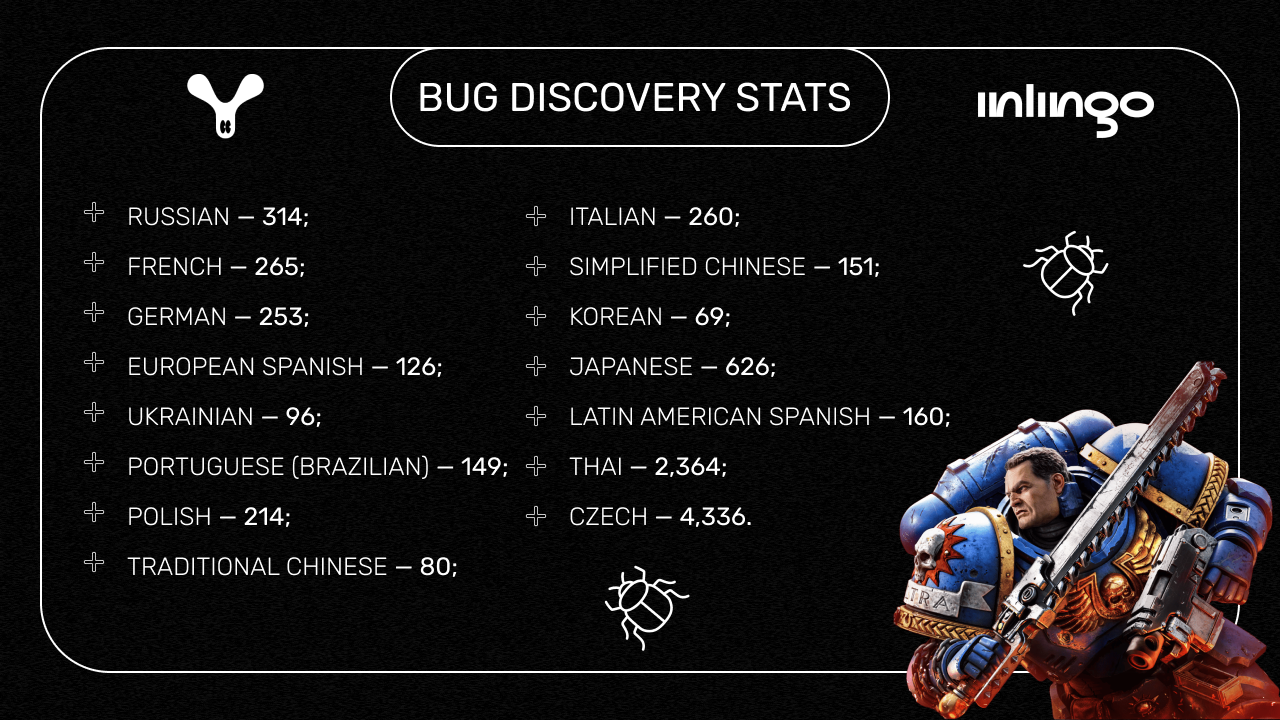

Kristina Lobkova, Project Manager:
“The communication with the client was incredibly smooth — we connected via Discord. The managers were almost always available, patiently answering our questions about instructions and content. Everyone understood the significance of this project, so mutual support and endless patience were always the top priorities.”
In this section, we’ll share the mistakes we discovered, how they impacted gameplay, and what helped us fix the bugs in different languages.
Text Length Bug
One of the most common issues is the text length problem. It involves both technical and linguistic aspects.
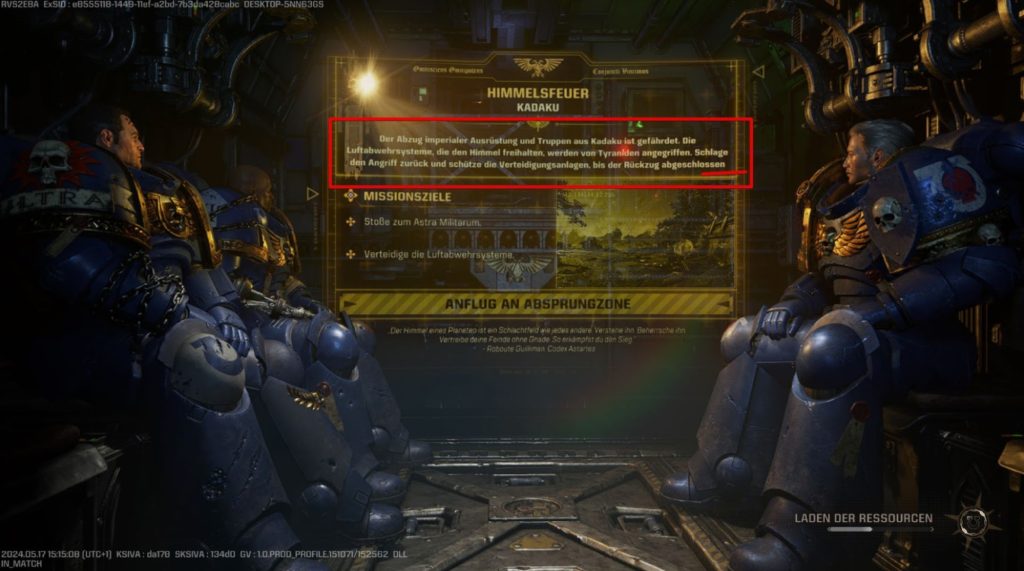
Here, the text doesn’t fit within the designated boundaries
If this bug isn’t fixed, the player won’t be able to see the full text that’s supposed to appear within the frame. There are two ways of addressing these kinds of issues: expanding the frame, which is a task for developers, or shortening the existing translation, which is the tester’s job.
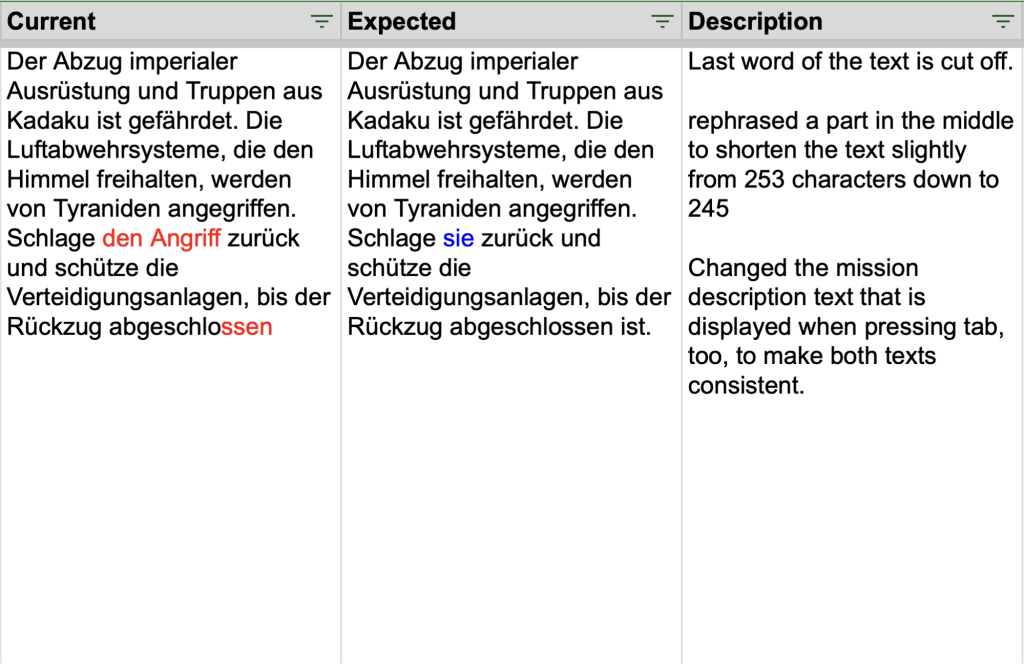
How we described this bug to the developers
In most cases, we tried to shorten the text so it would fit within the interface while maintaining terminology consistency. This approach lightens the developers’ workload when it comes to adjusting the interface. It’s much easier to trim text than to redesign the game’s UI.
Voiceover Checking
One of the key aspects of LQA is checking the game’s voiceover, ensuring it matches the text. Our task was to provide thoughtful feedback, as making changes to the VO is more complex and costly than adjusting the text.
In some cases, testers recommended re-recording a line, while in others, we suggested simply replacing the in-game text to align with the voiceover.
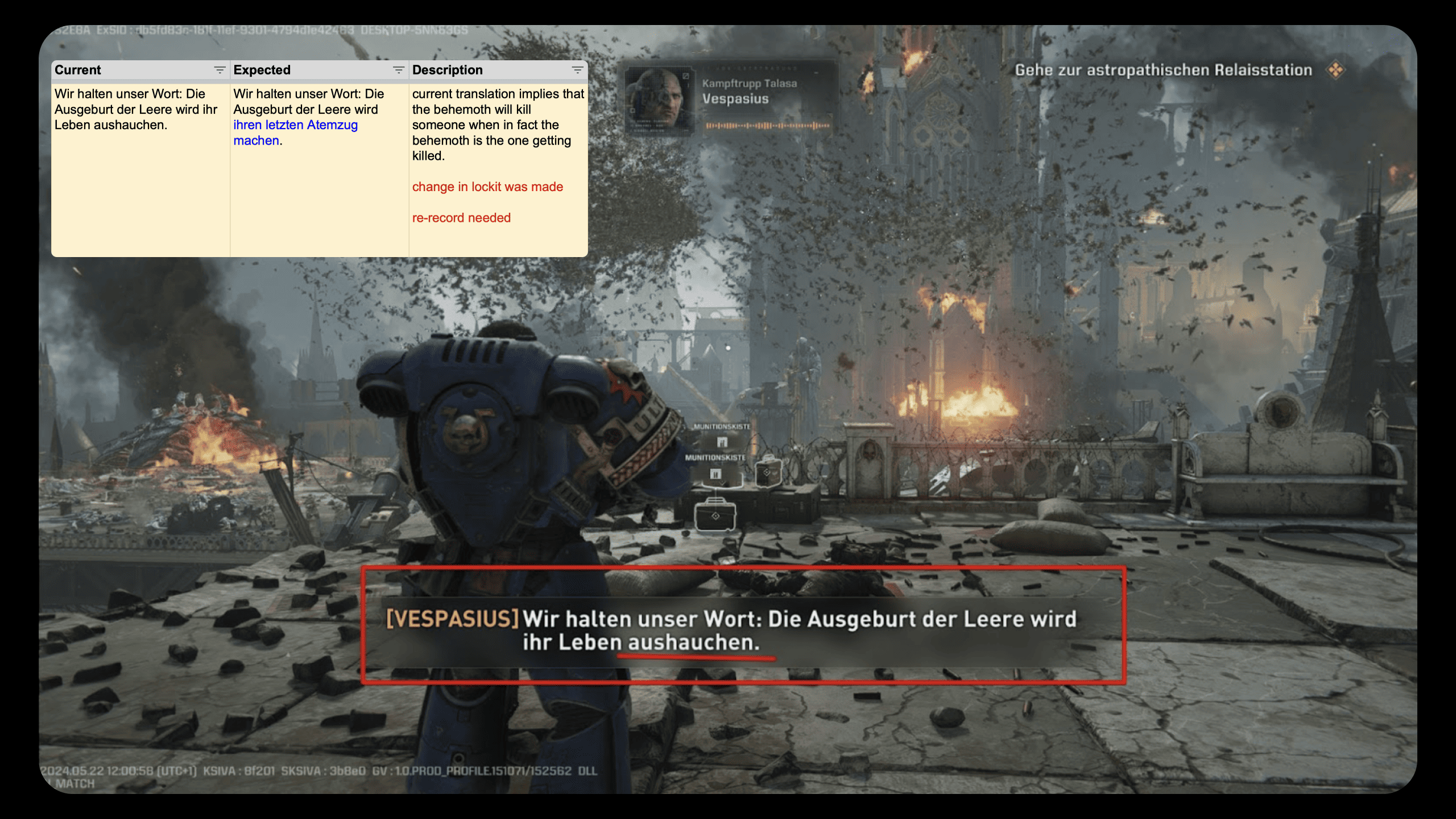
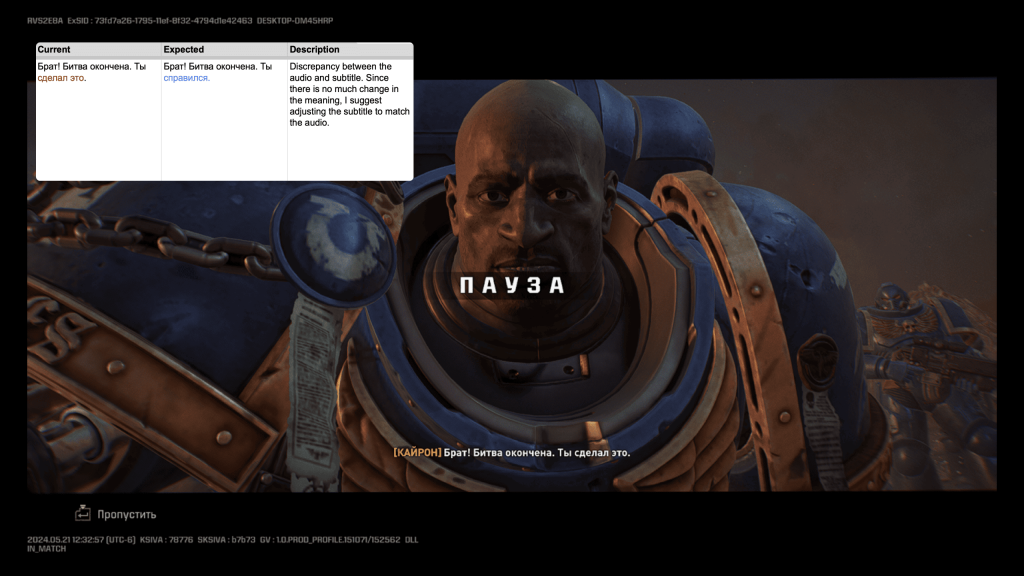
Different solutions for voiceover issues

Kristina Lobkova, Project Manager:
In the screenshot above, you can see that in the first case, the tester recommends re-recording the voiceover because 45%–50% of the line needs editing. In the second case, however, the suggestion is to save on re-recording costs and just edit the subtitles instead, as it’s faster and more efficient. That’s how we approached each situation — always choosing the most practical solution.
Text Wrapping
During testing, we discovered that 70% of the content lacked proper text wrapping. Texts were either misaligned or cut off mid-sentence. Here’s what it looked like:
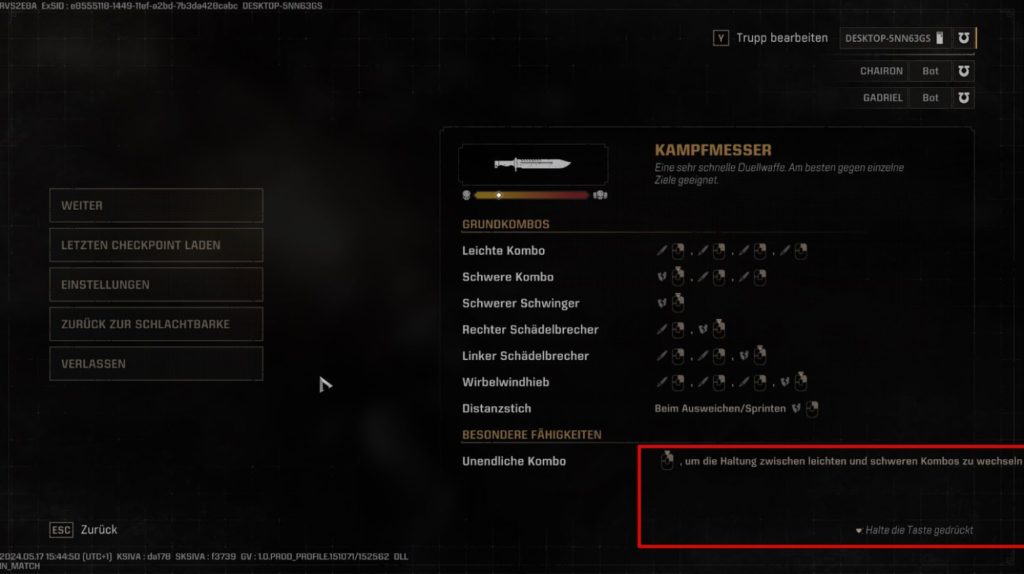
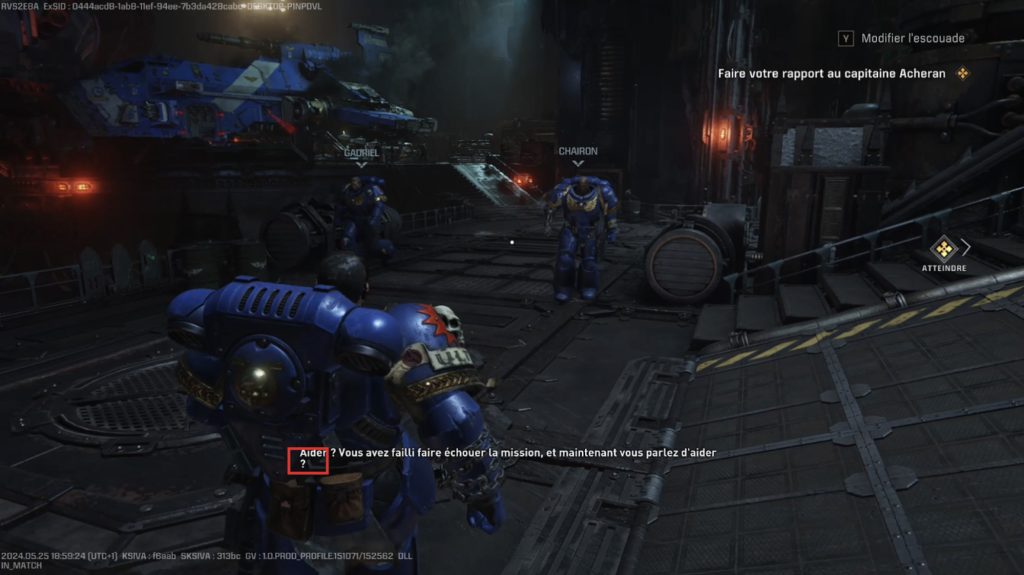
Text wrapping issues
Initially, we tried reporting these bugs and manually fixing them in the lockit, but we quickly realized that this approach was bogging down the testing process. It became clear we needed to find a different solution — one that would take a couple of hours to figure out.
We reached out to the developer and spent a long time clarifying the technical details of this bug. We had to be certain whether the engine would work correctly if we added a line break tag (n), or if we’d need to do come up with another solution.
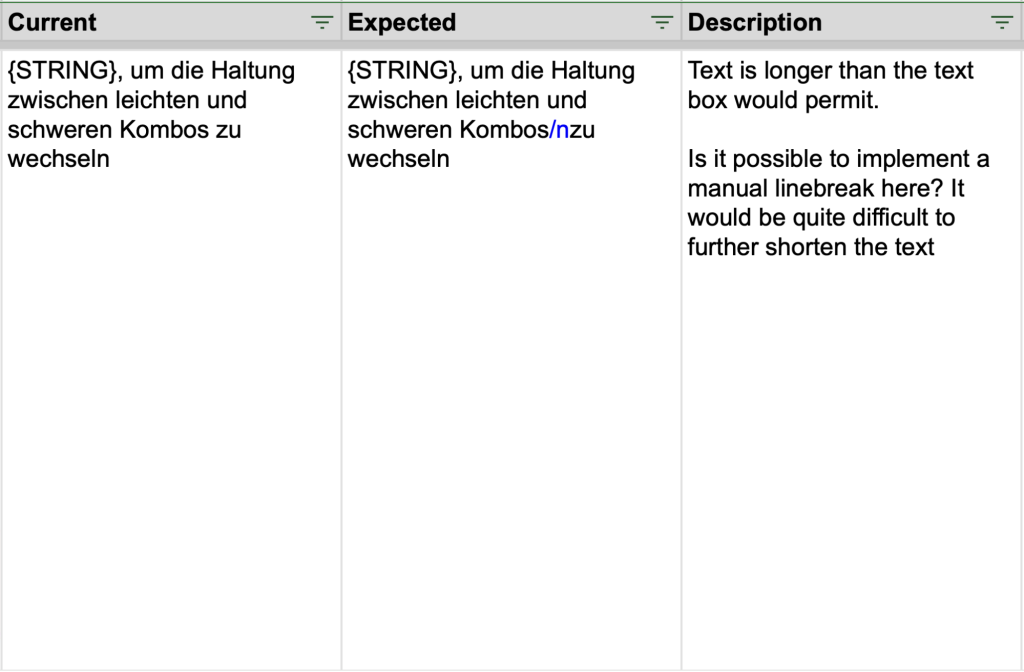
Here’s how we reached out to the developers
We provided the client with examples of lines where text wrapping issues frequently occurred and offered possible solutions in a bug report. The game’s developer was able to fix the bug on their end. Thanks to our combined efforts, we found a solution without needing to edit 70% of the localization kit.
Thai Language
After 10-15 hours of gameplay, the tester reported that in some areas, the Thai language appeared “broken.” Having encountered similar bugs before, we quickly assisted the developers in understanding the cause.
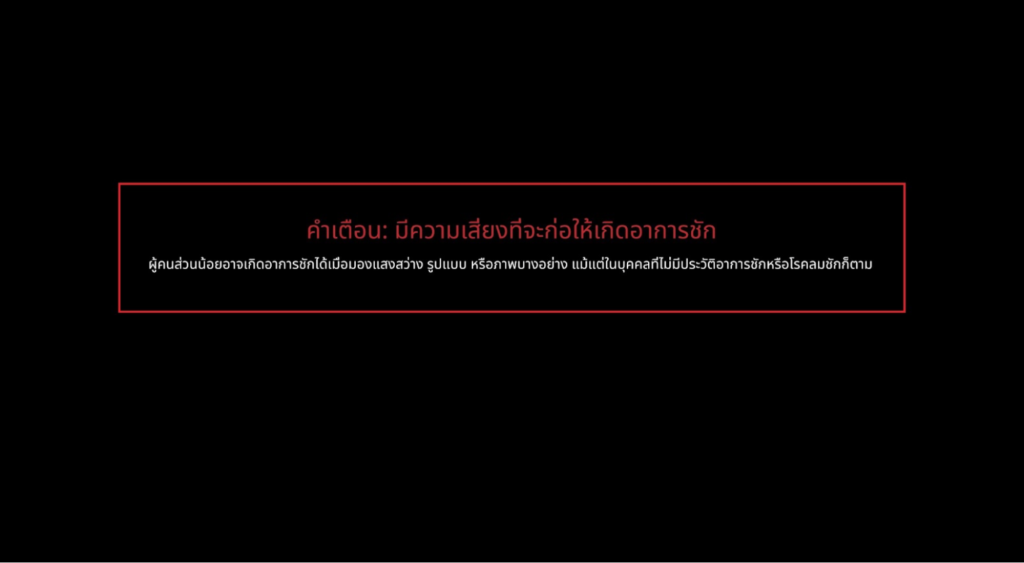
Here’s what happened: high-level vowels weren’t displaying properly
The issue lies in the unique structure of syllables in the Thai language. Thai writing has a distinctive system where vowels and tonal marks are placed above and below the consonants.
There are four levels in total:
These four levels combine according to syllable construction rules to form words.
Within the first few hours of gameplay, we noticed that the engine in Warhammer 40,000: Space Marine 2 was incorrectly recognizing the alphabet, causing it to “eat” half of the characters.

Another bug with the Thai language and its fix
The “broken” language couldn’t be tested further without fixes from the developers, or we’d have had to redo everything after the bug was fixed. We immediately halted the Thai language testing and flagged the issue. The development team was a huge help. Around 8-10 days later, the bug was resolved, and we were able to test the remaining content without pushing back deadlines.
Project Highlights
1 Content localization checked in 15 languages in just over a month.
2 Discovery of no fewer than 9,500 bugs.
3 Regression testing. Spent 70 hours testing Japanese and 30 hours on all other languages.

Guillaume De Cesare, Line Producer Focus Entertainment’s
Translating a game is a complex and time-consuming process, and we often lack the opportunity to step back and evaluate the translation quality across all languages. Our collaboration with Inlingo gave us that opportunity: not only did it allow us to correct numerous mistakes, but it also gave us greater confidence in the overall quality of the translations.
Since it’s impossible to accurately assess a translation without speaking the language, the insight and feedback provided by native speakers proved to be invaluable.
Additionally, without access to in-game context, it’s often challenging for translators to fully grasp the meaning behind certain lines. Thanks to Inlingo’s support, we were able to identify and fix hundreds of typos and possible misinterpretations.


